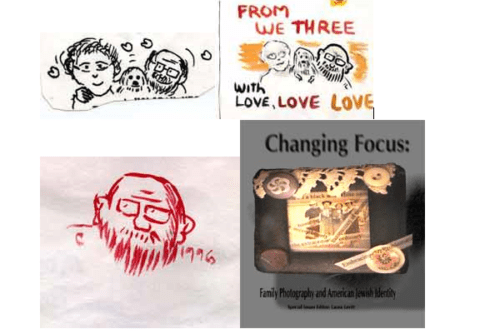Women don’t blog about politics. 1 Most bloggers are white men. 2 Women are afraid to put their opinions out there. 3 What women write about is personal and narcissistic. 4 At the heart of the “where-are-the-women-bloggers” question is the issue of what counts as public discourse. 5 Women supposedly don’t blog much on politics—at least, not as much or as successfully as men—preferring instead to write “mommy blogs,” “knitting blogs,” “personal blogs,” and the like. This is, of course, a fiction: largely as a response to the cliché, political and feminist women bloggers have made a point of organizing, online and off, and making their presence known. For the most part, the major political blogs now acknowledge that women, too, write about politics. Indeed, some of the major political blogs are written by women, for example: Jeanne D’Arc’s Body and Soul, Jeralyn Merrit’s Talk Left, Ann Althouse, Amanda Marcotte and Pam Spaulding of Pandagon, and Michelle Malkin. In fact, it’s quite difficult to determine how many of the top 100 blogs are written, or co-written, by women. According to The Truth Laid Bear rankings, most group blogs have at least one woman contributor, and a number of bloggers write under pseudonyms.
Another cliché is that “for most of history, Anonymous was a woman.” And there are historical antecedents for women writers’ invisibility. The main difference between then and now, as far as the “where-are-the-women” question goes, might simply be a question of feminist consciousness; we (rightly or wrongly) expect men to notice their women colleagues. We also expect women, now, to make a fuss if they’re overlooked, and indeed, women bloggers’ successful fussing has resulted in increased visibility. In addition to feminism, bloggers, unlike women writers of past generations, also have the nature of the Internet itself: self-publication and broad distribution are only a few keystrokes away. We can easily organize, link, collaborate, and call attention to ourselves—”fuss”—through comments, e-mail, dedicated Web sites, and group ad sales. Indeed, studies show that women and men blog in nearly equal numbers. 6
But the association between women and anonymity continues to resonate, and the impression that women are more likely to be anonymous lingers. Though we are just beginning to test the reliability of this impression by gathering hard data, it does seem to be the case that, though women and men both blog, women may be more likely to do so under an assumed identity: for example, one study has found that “74 percent of the anonymous academic bloggers . . . are women.” 7 Historically, we know that publication presented problems for women: while the modern world of novels and newspapers was being formed, readers “heard the word ‘public’ in ‘publication’ very distinctly, and hence a woman’s publication automatically implied a public woman” 8—that is, a whore. This problem, however, is surely a relic of the past, and since blogs are self-published, women bloggers need not mask their identities to overcome real or imagined publishers’ prejudices. Do women bloggers write anonymously more often then men? And if so, why?
This essay constitutes one attempt to begin answering these questions. I write a pseudonymous blog that is explicitly feminist and academic, and in two years of blogging I have been frequently struck by apparent parallels between blogging and my primary research area, early periodical publication—with, as it happens, a particular focus on women’s early pseudonymous periodical publishing. The same truisms—women wrote far less than men, and when they did write, they did so anonymously—have obtained in eighteenth-century periodical studies for years, even while scholars have come to recognize the centrality of women’s role in other genres, particularly the novel.
The distinction lies in the question of what counts as public discourse. The beginnings of print culture corresponded with a shift in the meanings of public and private. Broadly speaking, where public had been associated with authority, and private with common individuals, the early modern period began to redefine these terms along gender lines. While the public interest included affairs of state, it also included apparently apolitical issues such as marriage, domestic life, and manners. But increasingly the role of the state was seen as managing public affairs (politics, economics) in order to create a private domestic space in which men and women, as private individuals, were free from such management. 9 Hence, although both sexes consisted of private individuals who, combined, formed a public, the increasingly gendered nature of the economic roles of men and women meant that the public individual was conceived of as a man. Where women, as women, differed from men, their roles were assigned to the private realm.
- Kevin Drum, “Women’s Opinions,” posted to Political Animal, The Washington Monthly, February 20, 2005, http://www.washingtonmonthly.com/archives/individual/2005_02/005691.php. [↑]
- Steven Levy, “Blogging Beyond the Men’s Club,” Newsweek, March 21, 2006, http://www.msnbc.msn.com/id/7160264/site/newsweek/.[↑]
- Maureen Dowd, “Dish It Out, Ladies,” The New York Times, March 13, 2005, http://www.nytimes.com/2005/03/13/opinion/13dowd.html?ex=1268456400&en= f2460981091aa10e&ei=5090&partner=rssuserland.[↑]
- David Hochman, “Mommy (and Me),” The New York Times, January 30, 2005, http://www.nytimes.com/2005/01/30/fashion/30moms.html?ex=1264741200&en=635d616a9c739515&ei=
5090&partner=rssuserland.[↑] - CNN.com, “Pundits and Knitters Find Common Ground in Weblogs,” November 3, 2005, http://edition.cnn.com/2005/TECH/internet/08/10/mena.trott/.[↑]
- Deborah Fallows, “How Women and Men Use the Internet,” Pew Internet and American Life Project, December 28, 2005, http://www.pewinternet.org/pdfs/PIP_Women_and_Men_online.pdf; Susan C. Herring et al., “Women and Children Last: The Discursive Construction of Weblogs,” in Into the Blogosphere: Rhetoric, Community and Culture of Weblogs, ed. L. Gurak et al. (University of Minnesota: 2004), http://blog.lib.umn.edu/blogosphere/women_and_children.html.[↑]
- Scott Eric Kaufman, “A Post in Two Parts,” posted to Acephalous, February 12, 2006, http://acephalous.typepad.com/acephalous/2006/02/a_post_in_two_p.html.[↑]
- Catherine Gallagher, Nobody’s Story: The Vanishing Acts of Women Writers in the Marketplace, 1670-1820 (Berkeley, CA: University of California Press, 1994), 23.[↑]
- Jürgen Habermas, The Structural Transformation of the Public Sphere: An Inquiry into a Category of Bourgeois Society, trans. Thomas Burger (Cambridge, MA: MIT Press, 1991).[↑]



